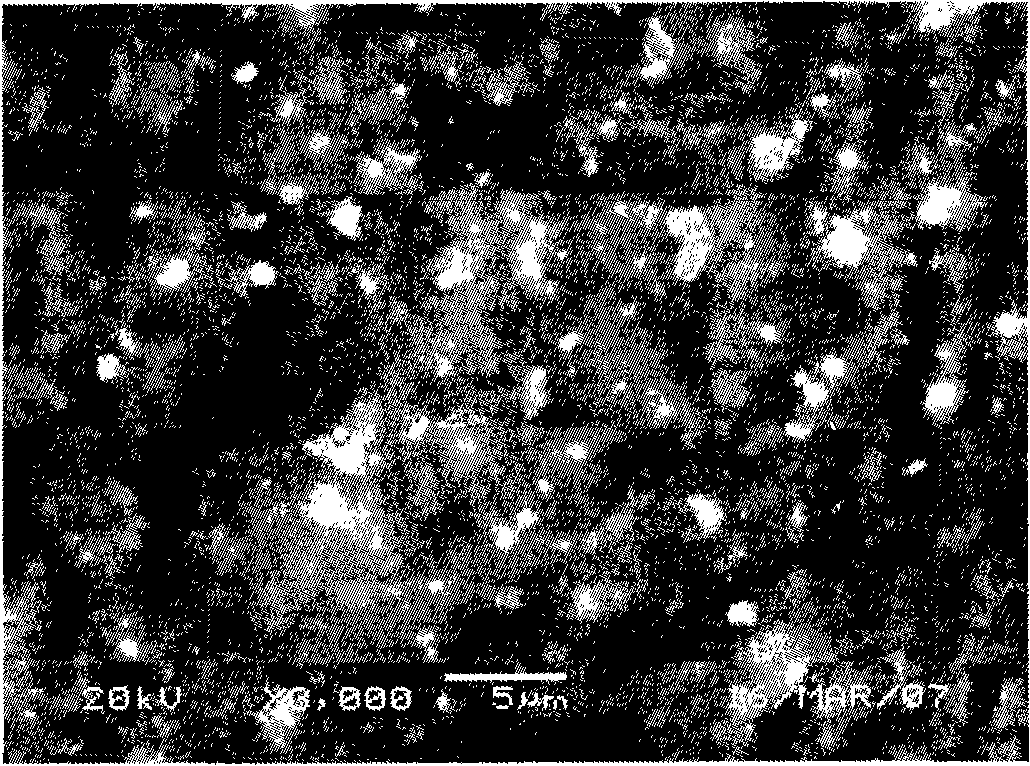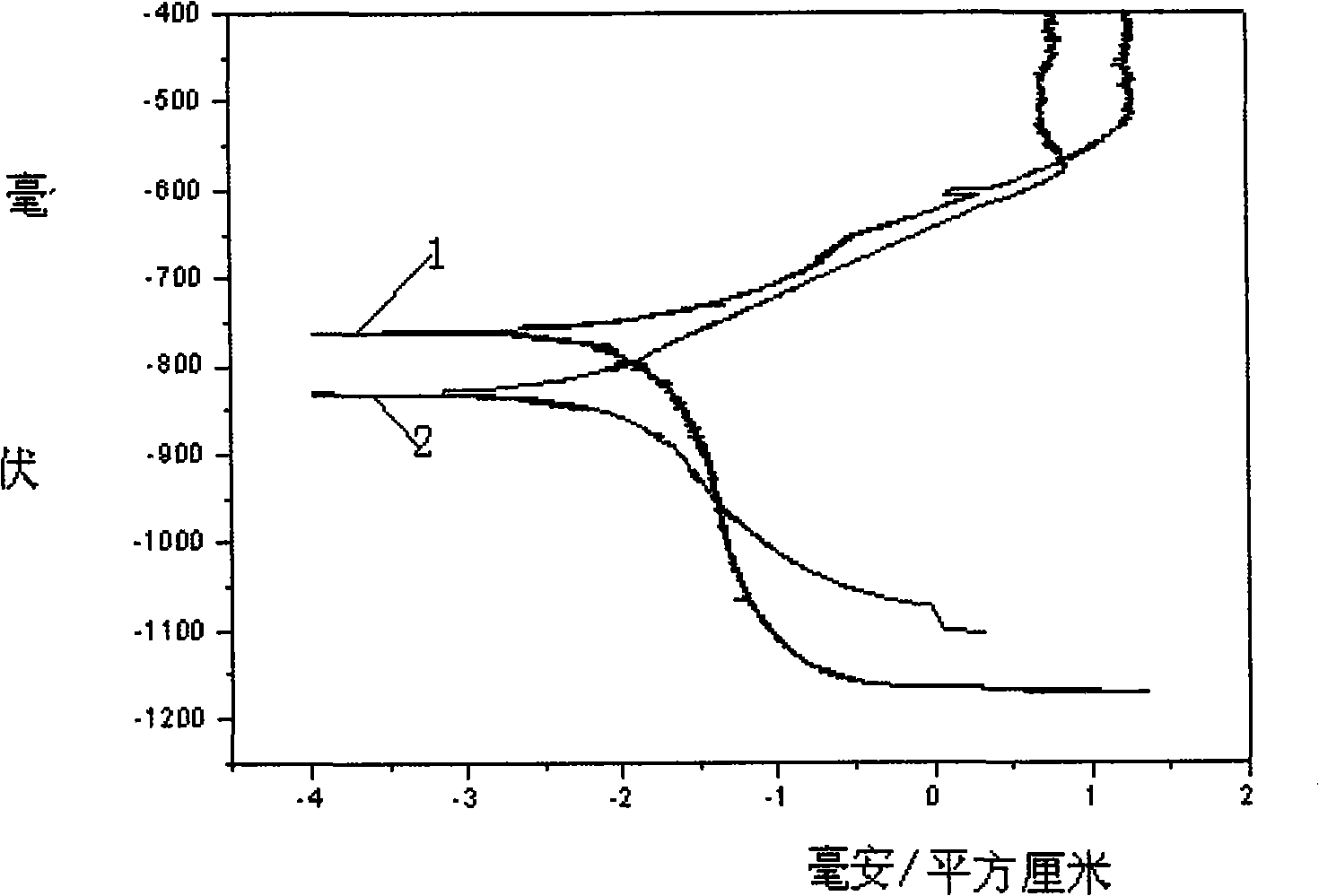Environment protection heat-proof acrylic resin insulation paint
A technology of acrylic resin and insulating coating, applied in the direction of fireproof coating, coating, etc., can solve the problems of poor stability, large viscosity change, poor temperature resistance of acrylic resin, etc., and achieve good interlayer resistance, corrosion resistance, and antirust performance Highlight and improve the effect of heat resistance
- Summary
- Abstract
- Description
- Claims
- Application Information
AI Technical Summary
Problems solved by technology
Method used
Image
Examples
Embodiment 1
[0032] 1. Preparation of nano-inorganic modified acrylic emulsion:
[0033] a) Take 20 parts of butyl acrylate, 13 parts of methyl methacrylate, 28 parts of styrene, 2.7 parts of acrylic acid, 1 part of compound emulsifier of sodium lauryl sulfate and alkylphenol polyoxyethylene ether, 1 part Sodium bicarbonate, 0.5 parts of N-methylolacrylamide, and 80 parts of water were mixed and stirred at room temperature for 1 hour to form a pre-emulsion.
[0034] b) 1.5 parts of ammonium persulfate and 1 part of silica sol were added to 30 parts of water, and mixed and stirred for 1 hour at room temperature to form a modifier suspension.
[0035] c) While stirring at room temperature, mix 10 parts of pre-emulsion and 10 parts of modifier suspension, raise the temperature to 78-85°C, and add 70 parts of pre-emulsion and 70 parts of modifier dropwise at 0.2 kg / hour The mixed solution of the modifier suspension, after dropping, add 10 parts of the modifier suspension dropwise at a rate of...
Embodiment 2
[0039] 1. Preparation of nano-inorganic modified acrylic emulsion:
[0040] a) Take 28 parts of butyl acrylate, 15 parts of methyl methacrylate, 24 parts of styrene, 3 parts of acrylic acid, 1 part of compound emulsifier of sodium lauryl sulfate and alkylphenol polyoxyethylene ether, 2 parts Sodium bicarbonate, 2 parts of N-methylolacrylamide, and 90 parts of water were mixed and stirred at room temperature for 1.5 hours to form a pre-emulsion.
[0041] b) 1.5 parts of ammonium persulfate and 5 parts of nano silicon oxide were added to 30 parts of water, and mixed and stirred for 1 hour at room temperature to form a modifier suspension.
[0042] c) While stirring at room temperature, mix 10 parts of pre-emulsion and 20 parts of modifier suspension, raise the temperature to 78-85°C, and drop 90 parts of pre-emulsion and 50 parts of The mixed solution of the modifier suspension, after dropping, add 20 parts of the modifier suspension dropwise at a rate of 0.2 kg / hour, and then ...
Embodiment 3
[0046] 1. Preparation of nano-inorganic modified acrylic emulsion:
[0047]a) Take 25 parts of butyl acrylate, 13 parts of methyl methacrylate, 22 parts of styrene, 3 parts of acrylic acid, 1 part of compound emulsifier of sodium lauryl sulfate and alkylphenol polyoxyethylene ether, 1.2 parts Sodium bicarbonate, 4 parts of N-methylolacrylamide, and 85 parts of water were mixed and stirred at room temperature for 2 hours to form a pre-emulsion.
[0048] b) Add 1.5 parts of ammonium persulfate and 10 parts of zirconium sol into 30 parts of water, and mix and stir for 1 hour at room temperature to form a modifier suspension.
[0049] c) While stirring at room temperature, mix 10 parts of pre-emulsion and 30 parts of modifier suspension, raise the temperature to 78-85°C, and add 90 parts of pre-emulsion and 70 parts of modifier dropwise at 0.3 kg / hour The mixed solution of the modifier suspension, after dropping, add 30 parts of the modifier suspension dropwise at a rate of 0.3 k...
PUM
| Property | Measurement | Unit |
|---|---|---|
| diameter | aaaaa | aaaaa |
| particle diameter | aaaaa | aaaaa |
| particle diameter | aaaaa | aaaaa |
Abstract
Description
Claims
Application Information
 Login to View More
Login to View More - R&D
- Intellectual Property
- Life Sciences
- Materials
- Tech Scout
- Unparalleled Data Quality
- Higher Quality Content
- 60% Fewer Hallucinations
Browse by: Latest US Patents, China's latest patents, Technical Efficacy Thesaurus, Application Domain, Technology Topic, Popular Technical Reports.
© 2025 PatSnap. All rights reserved.Legal|Privacy policy|Modern Slavery Act Transparency Statement|Sitemap|About US| Contact US: help@patsnap.com



